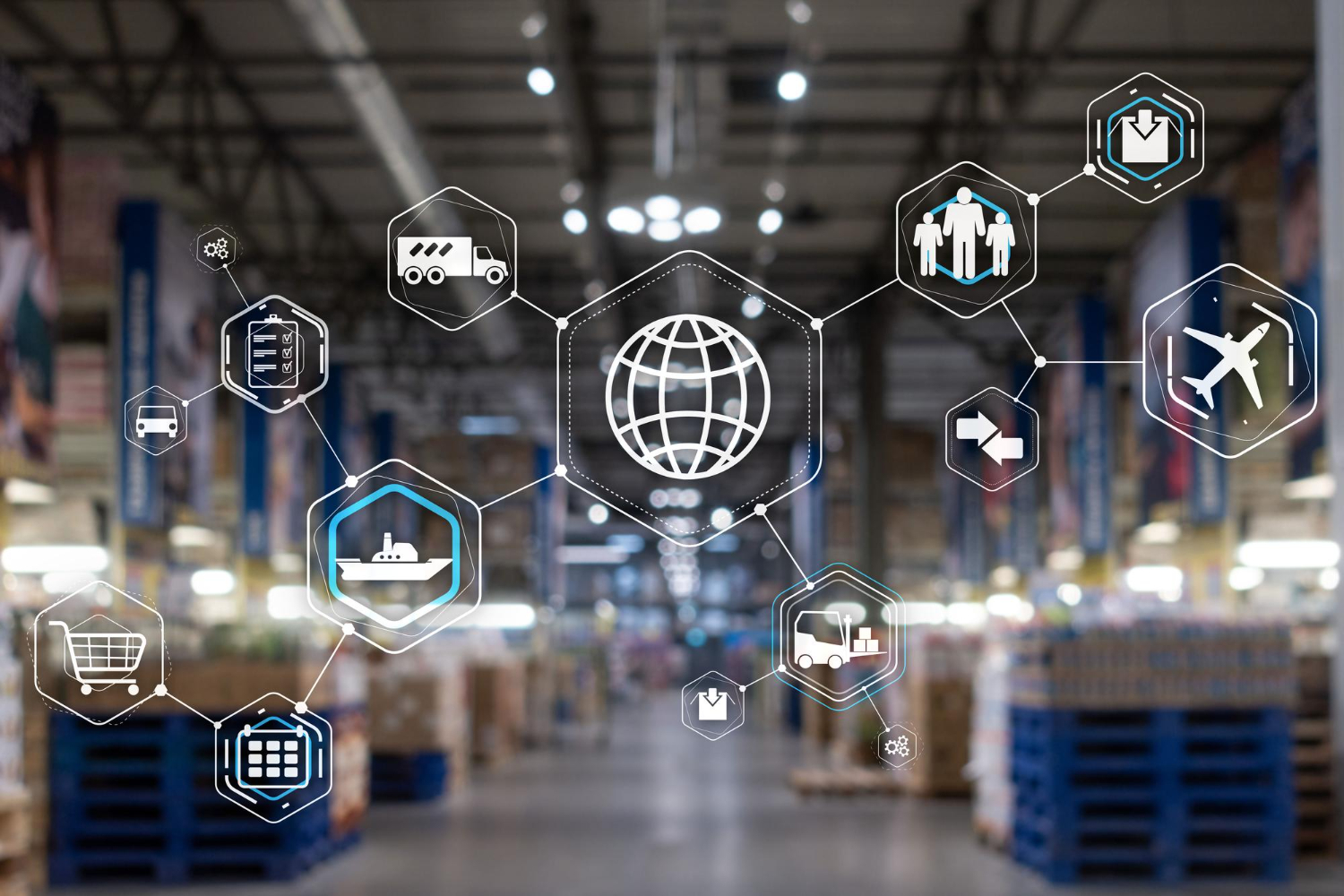Latest Trends in Supply Chain Management
- fruiSCE
- /
- May 24, 2024
- /
- Views
In the dynamic landscape of supply chain management, the winds of change are blowing stronger than ever. As we navigate through the complexities of the modern business environment, it becomes increasingly evident that traditional linear supply chains are gradually giving way to more sustainable and efficient models. Circular supply chains, once a niche concept, are now gaining momentum as businesses recognize the benefits of refurbishing discarded products and embracing a more environmentally friendly approach. Alongside this shift, the digitization of supply chain processes is revolutionizing the way businesses operate, offering real-time insights, enhanced efficiency, and improved inventory management. Meanwhile, the imperative for supply chain resilience has never been more pronounced, with organizations facing unprecedented disruptions and uncertainties. From visibility and digital twins to IoT, robotics, and artificial intelligence, the arsenal of tools available to supply chain professionals is expanding, enabling greater agility, adaptability, and innovation. In this blog, we delve into the key trends shaping supply chain management in 2024, exploring their implications and offering insights into how businesses can navigate this evolving landscape.
Circular Supply Chains:
Nearly all insiders seem to agree that linear supply chains are on their way out, and circular supply chains are on their way in. The term circular supply chain refers to a situation in which manufacturers refurbish discarded products and then provide them for resale. The goal is to help stave off the ever-growing cost of raw materials and improve the company’s green reputation. By looping their supply chains, suppliers of all kinds can cut costs, reduce the impact of price volatility, and stay ahead of new government regulations.
Digitization:
Businesses can drive their bottom line by creating digital manufacturing ecosystems. This trend is particularly relevant to e-SCM, or Electronic Supply Chain Management. Recent research showed that 60% of respondents already use, and 31% are implementing, digital supply chain analytics and visualization platforms. Reduce supply chain disruptions, improving efficiency and productivity by automating processes or workflows, improving inventory management with real-time tracking and a reduction in the risk of carrying too much inventory.

Supply Chain Resilience:
Supply chain resilience refers to the ability of businesses to anticipate and adapt to threats and disruptions while maintaining optimal performance levels. This can be achieved through a combination of effective risk management strategies and business continuity planning. By implementing measures such as supply chain simulation exercises, organizations can identify potential vulnerabilities or risks within their operations and develop comprehensive contingency plans for addressing these issues. The introduction of resilience metrics into the KPIs for measuring supply chain performance helps to ensure supply chain execution and design decisions balance efficiency and vulnerability. Supply chain risk is a constantly moving target, and therefore organizations must conduct regular reviews and stress tests to make sure their resilience procedures remain applicable. In this way, businesses can be better equipped to manage supply chain disruptions and maintain a competitive advantage in today’s highly uncertain global business landscape.
Additive Manufacturing:
Additive manufacturing, also known as 3D printing, revolutionizes traditional manufacturing processes by enabling rapid, cost-effective production of intricate designs. Leveraging computer-aided design (CAD) technology, additive manufacturing facilitates the creation of complex structures impossible with conventional methods. This versatile technology finds application across diverse industries, including aerospace, healthcare, and automotive sectors. While challenges remain in supporting mass production, ongoing innovations in additive manufacturing promise enhanced scalability and affordability, unlocking opportunities for mass customization and localized production.
Digital Supply Chain Twins:
With social distancing and remote labor, digital has surpassed manual since it gives real-time data from across the supply chain as well as exact analytics. This helped to avoid several interruptions. They reconstruct a full supply chain and its procedures in a digital environment that is easily accessible. Real-time data from IoT devices provides complete insight into everything, from consumer orders to specific commodities moving through the supply chain. It can detect production delays and their implications, as well as alert you to machinery that needs to be repaired. They provide substantial benefits to sectors outside of supply chain management as well but need a significant financial and equipment commitment.

Omni Channel Supply Chains:
To deliver value and meet customer demands, businesses will focus on offering an omnichannel buying experience. This allows customers the freedom to shop both online and in stores. Omnichannel supply chains will increase logistic demands to cater to both individual customer orders as well as replenishing stock at outlets, boosting growth at an operational level and increasing satisfaction at a customer level.
Supply Chain Agility:
The global COVID-19 pandemic outbreak increased the demand for necessary personal protection equipment (PPE). This attracted thousands of businesses to join the market and become suppliers or manufacturers. These businesses gathered raw materials and manufacturing equipment in a few weeks or just a few days, manufactured new products, and created a market that hasn’t existed before. The ability to adapt quickly to uncertainty helps businesses survive in such fragile situations. Nowadays, when climate change gets more severe and international trade faces more difficulties, businesses have to become agile more than ever to stay competitive and thrive.
The Internet of Things (IoT):
The rapid rollout of new higher speed, lower latency wireless technologies — from ubiquitous 5G cellular to in-building Wi-Fi 6 and 7 — is driving billions of new IoT connections, and the supply chain is a primary benefactor. Working with other wide area wireless networks and in-building networks, 5G will continue to expand cloud-based networks’ capabilities with sensors and edge computing to gather and process data on operations and logistics closer to the source. Gartner predicts that 25% of supply chain decisions will be made across intelligent edge ecosystems by 2025.
Robotics:
Robotics are transforming dozens of industries right now, and supply chains and logistics operations are no exception. Across the sector, companies are investing in drones and autonomous mobile robots to help them streamline operations and improve productivity. These technologies are designed to augment human efforts by automating procedures made up of simple, repetitive tasks while reducing human errors. This allows human workers to focus on more important jobs.
Artificial Intelligence and Machine Learning:
The use of AI and automation is becoming increasingly common in the supply chain industry, mostly geared toward streamlining and optimizing the supply chain process, by automating mundane and repetitive tasks. AI-based supply chain systems can also be used to identify and address potential issues in the supply chain such as delays, bottlenecks, and disruptions from unforeseen circumstances. These systems can also be used to improve the accuracy and speed of inventory management and forecasting. In addition to AI and automation, the use of robotic process automation (RPA) is also becoming increasingly popular in the management of supply chains globally. RPA enables the automation of repetitive tasks such as data entry, document processing and order tracking, thereby reducing manual labor and increasing efficiency in the supply chain process.

Ecommerce:
Uncertainty about consumer behavior will keep supply chain managers on their toes. Question marks hover over sales volume, to be sure, but also over preferences including in-store shopping, ecommerce marketplaces, direct-to-consumer (D2C) sales and subscriptions, speedy delivery of online purchases, BOPIS and online/in-store returns. For instance, customer expectations for hassle-free returns puts pressure on retailers’ ability to manage reverse logistics in the supply chain.
Customization:
Customer demand for greater choice and customized options seems to only grow. But delivering such product variety in 2025 could require new supply chain models and considerable attention to cost and complexity, with supply chains already under significant strain in the current environment. One model for filling this demand is mass customization, which combines mass production with customization to provide unique products on a relatively large scale, but at low cost. In this case, technology enablers like 3D printing could play a role in adding finishing touches to customize a product toward the end of production.
It is evident that the industry is undergoing a seismic shift driven by innovation, sustainability, and resilience. The rise of circular supply chains underscores the growing importance of environmental responsibility and resource optimization in today's business world. Simultaneously, the digitization of supply chain processes promises to unlock new levels of efficiency, transparency, and agility, empowering businesses to thrive in a rapidly changing environment. Moreover, the imperative for resilience has never been clearer, with organizations recognizing the need to anticipate and adapt to disruptions while maintaining optimal performance levels. From IoT and robotics to artificial intelligence and customization, the future of supply chain management is brimming with possibilities. By embracing these trends and harnessing the power of technology, businesses can chart a course towards a more sustainable, efficient, and resilient supply chain ecosystem, poised for success in the years to come.
